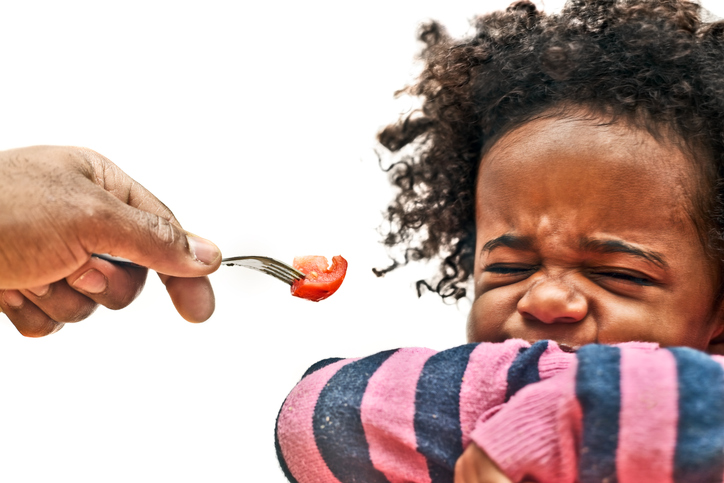How to Get Your Kids to Eat Healthy (7 tips from a mom)

Do you have kids? Do you struggle to find healthy foods that your kids will actually eat?
Faced with the incessant bombardment of junk food marketing, do you find it to be an insurmountable challenge to teach your children good nutrition behaviors? Is your child’s relationship with food shaped by what she or he sees on television, on the cover of magazines, or on social media?
If you share any of these concerns, I urge you to join me in mission to make children healthy again. You see, I have two daughters of my own, and I face many of the same struggles as you. That’s why I want to take a moment to share some of my top “mom tips” for encouraging good nutrition behaviors for our kids.
Fighting an Uphill Battle
I do my best to educate my girls on the benefits of “clean eating,” but when they’re constantly surrounded by processed junk foods, a whole foods diet is difficult to both understand and implement. I don’t know about you, but everywhere I turn, I see advocacy to eat poorly, from commercials to billboards to ads on the Internet and more.
But that’s not at all. Our kids are inundated with the same message at the grocery store (food packaging and placement), at school, and at parties. It’s a big enough challenge managing what your own kids eat let alone other children, and my girls often come home (from school or parties) asking me why they’re not allowed to eat the same foods as their classmates.
The truth is this: It is not okay for any child to consume mass quantities of sugar-filled cereals, snacks, juices, or processed foods. Children who regularly consume foods high in added sugars are at increased risk for obesity, elevated blood pressure, heart disease, diabetes and more. The American Heart Association recommends that kids age 2 – 18 should have less than 25 grams, or about 6 teaspoons, of added sugars daily.
Out of Sight, Out of Mind
If a food’s not there, there’s no argument over whether your kids are allowed to eat it. In other words, if you, the parent, are not buying unhealthy choices, your children will not be making them. As a parent, you’re in charge of what’s in (or not in) the fridge or cabinets until your kids are old enough to buy their own food. On the other hand, if a food is in the house, then it’s part of the familiar daily routine.
As our family pediatrician has told me from day one, when kids are hungry, they will eat; he has reassured me they will not starve. They may be stubborn and refuse to eat to test boundaries, but when they are hungry, they will eat. So, why not make sure that there are healthy foods available.
Mom Tip #1: Do a kitchen makeover to ensure that unhealthy foods are not available. Instead, make sure you have healthy foods convenient and accessible. For instance, set a fruit bowl out on the counter with two or three different options.
Be Cautious with the Carrot and the Stick
Often, we bribe our children with unhealthy foods. For example, if they try something healthy, we’ll offer them dessert. While this may get your child to take a bite of broccoli, you may be doing more harm than good. Unfortunately, dangling the carrot (e.g., dessert) can lead your child to believe that eating healthy (e.g., broccoli) is a form of punishment. Even if they like it, they may assign a negative connotation to it and associate it with something they are being forced to do.
Mom Tip #2: Be careful with rewarding your children with unhealthy treats such as cookies, ice cream, or candy. If you are looking for a way to reward good behavior or good grades, do so with a fun activity or a game that doesn’t promote poor food choices or eating habits.
Don’t Force Feed
I don’t know about you, but when I was growing up, I couldn’t leave the kitchen table unless I had cleaned my plate. While that rule may have been handed down by generations when food wasn’t as plentiful, it may not be great advice for our kids. In fact, this can promote overeating and make children more reliant on external cues and rules to tell them when to start and stop eating.
Mom Tip #3: Don’t force your children to finish their plates. Instead, help them tune into and be guided by their own appetite and satisfaction cues as much as possible.
Teamwork Makes the Dream Work
One tried and true tip for getting your kids to eat healthy is to have them help you with meal planning, grocery shopping, cooking, and cleaning up. By engaging them in the process, you teach your little ones valuable skills while enhancing autonomy. This is important because many battles over food and eating are really fights over individualization and independence.
Not only is this a great way to introduce your children to new foods and habits, they will take pride in sharing (and eating) their culinary masterpiece. Of course, before you begin, lay down some kitchen ground rules regarding what appliances are off limits, where sharp knives are kept, etc. And be sure to keep all pots and pans away from the edges of counter to prevent spills and burns.
Mom Tip #4: Include your kids in every step of the food-making process, from meal planning to grocery shopping to cooking to cleaning. It’s a great bonding experience, and it can instill valuable skills that are important for a child’s development.
Play with Your Food
To make meals more kid-friendly, cut larger foods into the appropriate size for your children. Kids also love shapes and food that looks fun. Take that boring sandwich from “Blah” to “Tada!” and make lunchtime fun again with a few cookie cutters.
Mom Tip #5: Be creative with the way you prepare your food. Prepare “mini” versions of foods that are more kid-friendly. Use cookie cutters to make fun shapes and do your best to make present food in fun, exciting ways.
Do-It-Yourself
One of my go-to ways to make mealtime fun—and sneak in some vegetables—is to have a “build-your-own-pizza” night. We make our own pizza crusts (sometimes using this cauliflower-based recipe), which we top with tomato sauce and our favorite cheese. Then, the kids get to choose from a variety of toppings, including tons of different veggies. Our mantra is, “The more colors the better!” You can even encourage them to make their favorite shape or a self-portrait.
Mom Tip #6: While food buffets may not be the healthiest options, we can take a page out their book. Allow your kids some flexibility and autonomy to create their own pizza, sandwich, salad, etc., by laying out several healthy options from which they can choose.
Watch Your Mouth
It’s important to watch your language around food. Be careful not to label things as “good” or “bad.” Be even more cautious about engaging in “fat talk,” or discussions of how food relates to body shape and size. This pertains to you too. I’ve seen many parents who constantly rag on their own weight, and that sets a terrible precedent for their kids and negatively impacts their relationship with food.
Mom Tip #7: Talk about how food makes us healthy or not, feel good or bad, have energy for what we want to do, etc.
Make a Difference
Last but not least, parents shouldn’t be afraid to be an advocate for their children. Don’t let healthy eating stop at home; insist on good food choices at school. Celebrity chef Jamie Oliver has created a School Food Toolkit, which guides parents like us to become more involved in the school system. The goal is to encourage and educate administrators to create balanced, nutritious lunches in the cafeterias.
As parents, we already know how difficult it is to break bad habits. Instead of making your kids go through the same difficult, haunting process, help them establish a healthy relationship with food early in life. After all, it’s our responsibility to help our children develop healthy habits early in life that will reap lifelong benefits. Hopefully these tips will be helpful to you and your kiddos!







